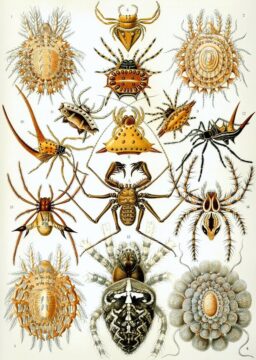Shayla Love at The New Yorker:
 The literature showed insects to be far more sophisticated than one might expect of an automaton. Many have nociceptors that send signals to other parts of the insect brain, such as the central complex (associated with spatial navigation and locomotion) and the mushroom bodies (linked to learning, memory, and sensory integration). Cockroaches have a nervous-system pathway that leads up from the body to the brain and back again. In a 2019 study, researchers exposed cockroaches to a hot stimulus and a neutral stimulus; the neutral stimulus prompted a weaker signal from the body to the brain, and the hot stimulus led the roaches to try and escape. (Unsettlingly, cockroaches without heads responded to the heat but did not try to escape.) A recent genomic study of mantises, which are notorious for eating their mates during and after sex, found genes that code for nociceptive ion channels—proteins that respond to pain.
The literature showed insects to be far more sophisticated than one might expect of an automaton. Many have nociceptors that send signals to other parts of the insect brain, such as the central complex (associated with spatial navigation and locomotion) and the mushroom bodies (linked to learning, memory, and sensory integration). Cockroaches have a nervous-system pathway that leads up from the body to the brain and back again. In a 2019 study, researchers exposed cockroaches to a hot stimulus and a neutral stimulus; the neutral stimulus prompted a weaker signal from the body to the brain, and the hot stimulus led the roaches to try and escape. (Unsettlingly, cockroaches without heads responded to the heat but did not try to escape.) A recent genomic study of mantises, which are notorious for eating their mates during and after sex, found genes that code for nociceptive ion channels—proteins that respond to pain.
Gibbons and her colleagues ultimately found “strong evidence for pain” in adult flies, mosquitoes, cockroaches, and termites. Such insects did not appear to be at the bottom of a hierarchy of animals; they met six out of eight criteria developed for the Sentience Act, which was more than crustaceans.
more here.
Enjoying the content on 3QD? Help keep us going by donating now.
